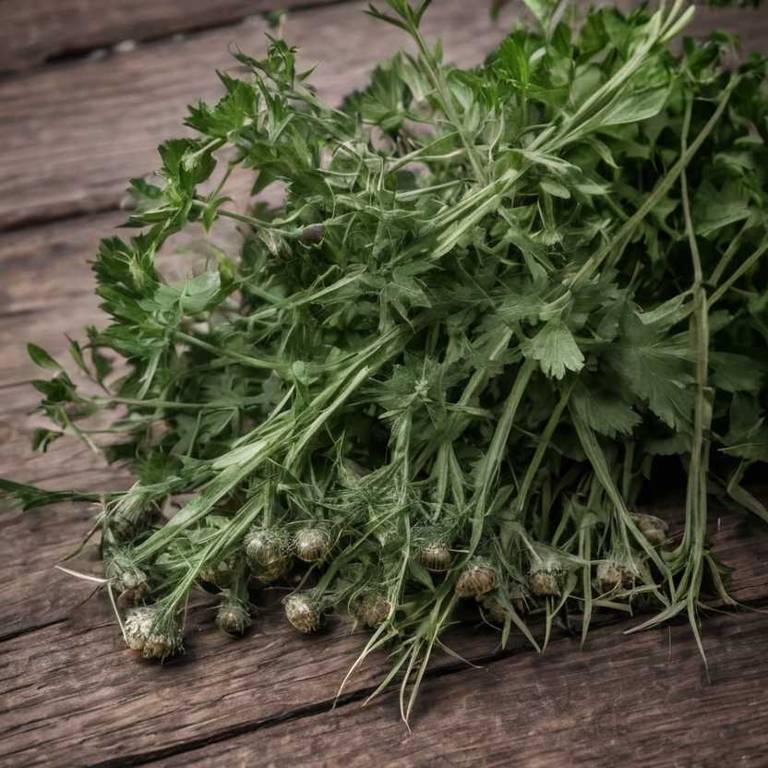By Leen Randell
Updated: Jul 07, 2024
What to know about Cirsium japonicum (japanese thistle) before using it medicinally

Cirsium japonicum, commonly known as Japanese thistle, is a versatile herb that has been prized for its health benefits, from reducing inflammation and improving digestion to boosting the immune system and fighting off infections.
In the horticultural world, Cirsium japonicum is a popular ornamental plant, valued for its striking purple flowers and drought-tolerant foliage. From a botanical standpoint, the herb belongs to the sunflower family and is characterized by its large, thistle-like flowers and prickly stems.
Historically, Cirsium japonicum has been referenced in traditional Chinese medicine for centuries, with its roots and flowers used to treat a range of ailments, from fever and rheumatism to skin conditions and respiratory issues.
This article explains the medicinal, horticultural, botanical, and historical aspects of Cirsium japonicum.
What are the medicinal properties of Cirsium japonicum?
Cirsium japonicum, also known as Japanese thistle, helps with treating fever, rheumatism, and respiratory problems due to its anti-inflammatory and expectorant properties. It is also used to reduce blood pressure and cholesterol levels. Its extracts have shown antioxidant activity.
The active constituents of Cirsium japonicum include flavonoids, saponins, and triterpenoids, which contribute to its medicinal properties. These compounds have been isolated and studied for their potential health benefits, including anti-inflammatory and antioxidant activities.
The parts of Cirsium japonicum most commonly used for medicinal purposes are the leaves, flowers, and roots. The leaves are often used to make teas, while the flowers are used to make infusions. The roots are dried and used as a powder or capsule.
Improper use of Cirsium japonicum can cause side effects such as allergic reactions, gastrointestinal upset, and interact with certain medications. It is essential to consult a healthcare professional before using it as a treatment.
When using Cirsium japonicum medicinally, it is recommended to follow standard dosages and preparation methods. Pregnant and breastfeeding women, children, and individuals with certain medical conditions should consult a healthcare professional before using the plant.
What are the horticulural aspects of Cirsium japonicum?
Cirsium japonicum, also known as Japanese thistle, grow in well-drained soil with a pH range of 6.0-8.0. It thrives in full sun to partial shade, tolerating temperatures from -20°C to 35°C. Average annual rainfall of 500-1500 mm is optimal.
Planting tips for Japanese thistle involve sowing seeds in fall or early spring, 1-2 cm deep and 10-20 cm apart. Space plants 30-50 cm apart for adequate air circulation and growth. Water regularly, but avoid overwatering, which may lead to root rot.
Harvesting Japanese thistle involves cutting or digging the plant when flowers are in full bloom, usually in late summer. Remove any dead or damaged leaves, and dry the flowers for herbal use or decoration. Propagation can also occur through division or seed.
Common pests affecting Japanese thistle include aphids, spider mites, and caterpillars. Leaf spot diseases, such as powdery mildew and downy mildew, can be managed with fungicides or by removing infected leaves. Regular monitoring and maintenance are essential for preventing infestations and infections.
What are the botanical aspects of Cirsium japonicum?
Cirsium japonicum, also known as Japanese thistle, is a biennial or perennial herbaceous plant that belongs to the Asteraceae family. It has a taproot system, with leafy stems that can grow up to 1 meter tall, and narrow, lance-shaped leaves with a waxy coating.
Taxonomically, Cirsium japonicum is classified as follows: Kingdom: Plantae, Clade: Angiosperms, Clade: Eudicots, Clade: Asterids, Order: Asterales, Family: Asteraceae, Genus: Cirsium, Species: C. japonicum. It is further divided into two subspecies: C. j. japonicum and C. j. orientalis.
There are three variants of Cirsium japonicum, namely: Cirsium japonicum var. japonicum, Cirsium japonicum var. orientalis, and Cirsium japonicum var. glabratum. The variants differ mainly in their leaf shape, size, and flowering period.
Cirsium japonicum is native to East Asia, specifically in China, Japan, and Korea. It has been naturalized in the United States, Canada, and Europe, where it grows in disturbed areas, such as fields, roadsides, and waste ground.
The life cycle of Cirsium japonicum begins in autumn, when it germinates from seeds. It overwinters as a rosette, and in spring, it produces a stem and flowers. The plant matures in summer, and seeds are produced in late summer or early autumn, which then disperse to propagate the species.
What are the historical aspects of Cirsium japonicum?
Cirsium japonicum, also known as Japanese thistle, is a plant with a long history of use in traditional medicine in East Asia. In China, it was used to treat digestive issues and as an anti-inflammatory agent. In Japan, it was used to treat fever and rheumatism.
In Japanese mythology, Cirsium japonicum is associated with the goddess of fertility, Izanami. According to legend, the plant's spiny leaves were said to have been created from the goddess's hair. This mythological connection is reflected in the plant's common name in Japanese, "Higurashi" meaning "spiny goddess".
In terms of symbolism, Cirsium japonicum represents longevity and endurance in Japanese culture. The plant's ability to thrive in harsh environments is seen as a metaphor for human perseverance. In China, the plant is associated with the element of metal and is said to possess purifying properties.
Historical texts mention Cirsium japonicum in the Materia Medica of the 16th century Chinese physician Li Shizhen. He described the plant's medicinal properties and its uses in treating a variety of ailments. In Japan, the plant is mentioned in the Kokon Hyakka, a 10th-century encyclopedia of Japanese natural history.
Cirsium japonicum has been depicted in various historical artifacts, including 17th-century woodblock prints from Japan. These prints show the plant's distinctive flower and leaf structures, as well as its uses in traditional Japanese medicine. Similarly, Chinese ceramics from the Ming dynasty feature illustrations of the plant, highlighting its importance in traditional Chinese medicine.